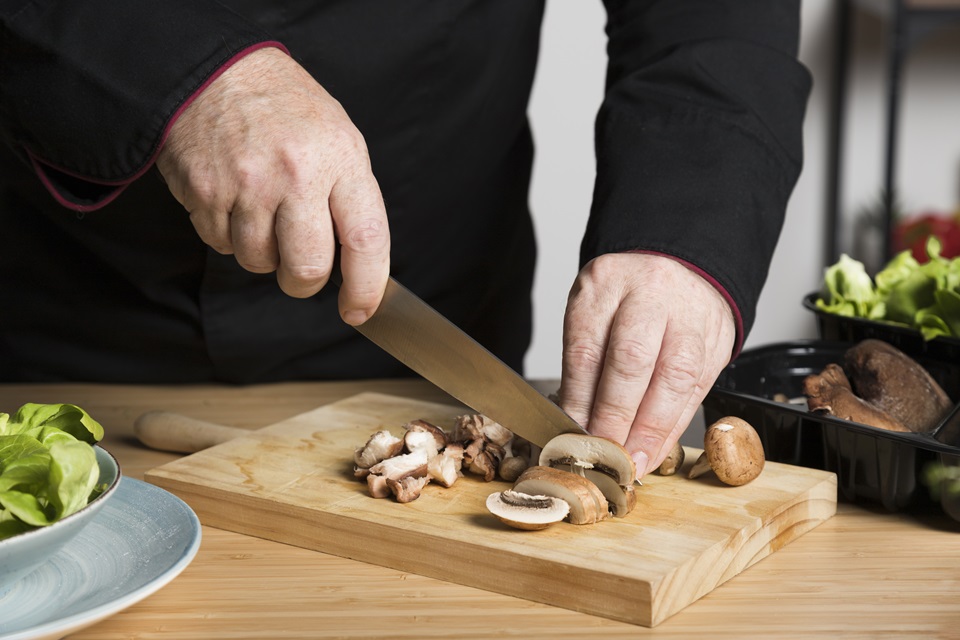Preparing meals with finesse is an art. One tool that stands as a culinary essential is the kitchen knife. This mighty instrument can make all the difference in your cooking experience, turning ordinary ingredients into finely crafted dishes. However, with many options available, selecting the right kitchen knife for precision tasks can take time and effort. This article will steer you through choosing the perfect Kitchen Knife that suits your culinary needs.
Table of Contents
Blade Types-A Glimpse
The first step in selecting a kitchen knife is understanding the different blade types available. Each blade type is designed for specific tasks, and choosing the right one will greatly enhance your cutting precision.
Chef’s Knife: This versatile knife features a wide and curved blade, making it ideal for various tasks, including chopping, slicing, and dicing. It’s a must-have for any kitchen.
Paring Knife: With a small, narrow blade, paring knives are perfect for intricate tasks like peeling, trimming, and deveining.
Serrated Knife: The serrated blade is designed for slicing bread, tomatoes, and other foods with tough exteriors and soft interiors.
Utility Knife: This knife is smaller than a chef’s cutter but larger than a paring knife. Utility knives, like the beautiful Damascus kitchen knives, are great for tasks that require more precision than a chef’s knife can offer.
Consider The Blade Material
Once you’ve identified the type of knife you need, it’s essential to consider the material of the blade. The blade material can significantly impact its performance and durability. Here are some common blade materials to choose from:
Stainless Steel: This material is known for its resistance to rust and staining. These blades are low-maintenance and suitable for everyday use, especially when considering the best Japanese knives renowned for their precision and durability.
Carbon Steel: Carbon steel blades are preferred for their sharpness and edge retention. However, they require more care to prevent rust.
High Carbon Stainless Steel: Combining the best of both worlds, high carbon stainless steel blades offer sharpness and resistance to staining.
Ceramic: Ceramic blades are sharp and retain their edge well. However, they can be brittle and prone to chipping if mishandled.
Handle Comfort & Grip
The handle of a kitchen knife plays a crucial role in your comfort and control while using it. Consider the following aspects when evaluating the handle:
Material: Common handle materials include wood, plastic, stainless steel, and composite materials. Select a handle material that feels comfortable in your hand.
Ergonomics: Look for a knife that has ergonomic handle design that gives a secure and comfortable grip.
Balance: A well-balanced knife ensures that you have control over the blade, reducing the risk of accidents.
Knife Maintenance
Lastly, consider the maintenance requirements of the knife. Some knives require more care and attention than others. Factors to keep in mind include:
Sharpening: Determine how easy it is to sharpen the knife when it eventually dulls. Some blades may require professional sharpening.
Cleaning: Consider whether the knife is dishwasher-safe or needs to be hand-washed to maintain longevity.
Storage: Proper knife storage is crucial to prevent blade damage and ensure kitchen safety. Look for knives with protective blade covers or invest in a knife block or magnetic strip for safe storage.
In conclusion, selecting the perfect Kitchen Knife for precision tasks involves understanding blade types, considering the blade material, evaluating handle comfort and grip, and factoring in knife maintenance. By considering these aspects, you can equip yourself with the ideal culinary tool to elevate your cooking skills and create culinary masterpieces in your kitchen.



